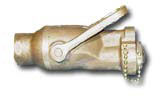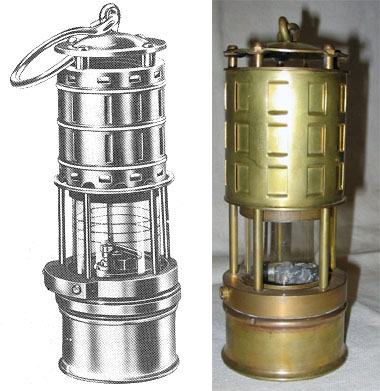|
Repairs that could be made with large plate patches were a
major effort underway or at anchor that required several
personnel and a large quantity of DC equipment. Plates of sizes
up to five feet in diameter were used with great success during
WWII. Holes larger than five feet almost certainly required that
the work be done in a shipyard.
Some large patches were
partially prefabricated, with the plate pre-cut and stowed for
quick access. A final preparation was to weld a series of pad
eyes onto the plate. Some pad eyes were measured to be inset to
the existing hole opening, used to attach the long handling
lines on the inside edge. The largest weight-bearing pad eye was
placed in the top center of the patch for lowering it on the
outside of the hull and hauling it into position. Two pad eyes
were welded to each top outside corner of the plate to aid in
lowering, especially for plates more than two feet across. Two
additional pad eyes were welded on a horizontal plane inside so
as to secure additional lines or guys to stabilize the patch and
hold it in place. Guys were also used to support the patch after
installation.
Either the chain falls or block and tackle was used in
lowering the plate over the side of the ship. The handling line
was attached to a stanchion or other secure stable structure
topside, the slack let out as the plate was lowered into
position, and tied off when in place. The chain falls’ hook was
secured to a steel wire rope strap that was secured to a solid
stout structure or pad eye.
Eleven Sailors plus the diving team were generally required
for large plate patch repairs. Personnel were most always from
repairs 1, 5 and 3, and also their unit lockers. For rigging pad
eyes, lines, chain falls or block and tackles in these big
damage control evolution repair jobs, it was preferred have a
boatswain’s mate chief (BMC) from repair 1 in charge; three to
five additional boatswain’s mates were required for rigging,
especially if more block and tackles with jiggers were being
used. Three damage controlmen (DCs) or carpenter’s mates helped
to handle setup for the installation. Three
shipfitter-metalsmiths (SFMs) were required for fabrication,
setup, installation and welding.
If the damaged space was accessible, a Sailor stood by in it
with a long pipe with a “J” or boat hook to pull the line and
patch into position. If the damaged compartment was inaccessible
due to flooding, a qualified shallow water diver with the hose
air-line mask outfit dove down through a hatch opening into the
compartment to secure the patch in place. When the plate was
being lowered into position, the main handling line was attached
and wrapped around a stanchion or other secure stable structure.
A Spanish windless was then fabricated, with a small pipe or a
wooden stick inserted in the lines and turned several times to
tighten the line. Once tightened, the pipe or stick was secured
with a small ½-inch line to prevent it from spinning out of
position. This procedure created tension on the line holding the
plate patch in place from the inside. The patch was sealed with
a rubber gasket or rolled canvas after all hot work was
completed.
This type of patch had to be inspected frequently, as they
tended to shift and slip with the movement of the ship,
especially if semi-permanent welds to brackets, clamps or other
types of holding devices were not made. A watch had to monitor
the installation, similar to a shoring watch.
Once a plate patch was installed, the compartment was
dewatered using the portable P-500 pump, in combination with
eductors, to dramatically improve the ship’s stability and
reserve buoyancy, which were prime considerations. This was
especially the case if the damage had approached or exceeded 15
percent of the ship’s length and reserve buoyancy.
Appropriate reports were made to the on scene leader (the BMC)
when the hole was under repair and when the repairs were
completed. |



